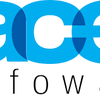In 2023, micro frontend frameworks are poised to take center stage, offering developers increased performance, flexibility, and scalability. According to a report, the global Microservices Architecture Market is projected to grow from $5.9 billion in 2020 to $21.1 billion by 2025, at a CAGR of 28.3%. This growth is expected to be driven by the adoption of micro frontend architecture in the development of modern web and mobile applications. So let’s dive in and explore the future of frontend development with 5 top micro frontend frameworks for 2023.
Why is the Micro Frontend framework important?

1. Increased Agility and Flexibility
- Micro Frontends allow for more flexibility and agility in development, as each application feature is an independent module that can be developed, tested, and deployed in isolation.
- Teams can choose the technology stack that best fits their needs and preferences, allowing for greater flexibility in development.
2. Improved Scalability
- Micro Frontends make it easier to scale applications horizontally, as each module can be deployed separately, allowing for better performance and reliability.
- It also enables teams to easily add or remove features from the application without affecting the rest of the application, making it more scalable in the long run.
3. Reduced Dependency and Improved Maintenance
- Micro Frontends reduce dependency between features, making it easier to maintain the application over time.
- Each module can be developed, tested, and deployed independently, which makes it easier to make updates or changes without impacting the entire application.
4. Better Team Productivity and Collaboration
- Micro Frontends allow teams to work independently on different parts of the application without stepping on each other’s toes, improving productivity and collaboration.
- Each team can focus on its specific feature or functionality, reducing conflicts and streamlining development.
5. Improved User Experience
- Micro Frontends enable developers to create better user experiences by focusing on specific features and functionality.
- It also allows for greater customization and personalization of the application, improving user engagement and satisfaction.
5 Top Micro Frontend Frameworks 2023
- Single-SPA framework
- Piral Framework
- Luigi Framework
- OpenComponents Framework
- Mosaic Framework
When it comes to Micro Frontends, there is no one-size-fits-all approach. From clever build-time integrations to customized run-time routers, there are a plethora of techniques that can be employed to create efficient and effective micro frontend architectures. To facilitate the development process, several powerful tools have emerged, each with its own unique set of benefits and features. Let’s take a closer look at some of the most prominent tools available for building micro frontends:
1. Single-SPA Framework

Single-SPA, or Single Page Application, is a framework that allows developers to build web applications as a collection of micro frontends. It allows developers to use different frameworks and libraries for different parts of the application, making it easier to customize and update the application over time.
# How does Single-SPA work?
- Single-SPA uses a router to determine which micro frontend to load based on the current URL. When the user navigates to a new page, the router determines which micro frontend to load based on the URL path and loads it dynamically.
- Each micro frontend is a standalone JavaScript application that can be developed and deployed independently. This allows for greater flexibility and agility in development, as each micro frontend, can be updated or modified without affecting the rest of the application.
- Single-SPA provides a set of lifecycle hooks that allow micro frontends to interact with each other and with the router. For example, a micro frontend can register itself with the router, which allows it to receive notifications when the URL changes.
- Single-SPA also provides a module loader that allows micro frontends to import and export functionality between each other. This makes it easier to share code and resources between micro frontends, reducing redundancy and improving efficiency.
# Some Key Benefits of Single-SPA
👉 Easier to test, update, and maintain application over time
👉 Multiple libraries to save development time
👉 Dynamic loading to reduce load times
👉 Greater flexibility in development
👉 Seamless user experience
2. Piral Framework

Piral is a powerful open-source framework for building modular, extensible, and scalable web applications. It is designed to support the concept of micro frontends, allowing developers to build web applications as a collection of modular components that can be developed and deployed independently.
# How does Piral work?
- Piral uses a dynamic loading mechanism that allows it to load and unload micro frontends on-demand, improving application performance and reducing load times.
- It provides a plugin architecture that enables developers to extend and customize the framework’s functionality by writing plugins.
- Piral allows developers to share dependencies across different micro frontends, reducing the application’s overall size and improving performance.
- It provides a centralized state management system, which allows developers to manage the application’s state in a single location.
# Key Benefits of Piral Framework
👉 Adaptable architecture to handle large-scale micro frontend applications
👉 Facilitate sharing of code and resources across teams
👉 Reduce technical debt and improves code quality
👉 Faster development and deployment cycles
👉 Powerful bundling and caching mechanism
👉 Flexible and extensible API
3. Luigi Framework

Luigi is “the enterprise-ready micro frontend framework” that helps build modular, extensible, scalable, and consistent UIs and Web Apps. It follows a declarative approach to UI composition, where each micro frontend declares its dependencies on other micro frontends, and the framework takes care of resolving and loading these dependencies.
# How does Luigi work?
- Luigi provides a centralized configuration system that allows developers to easily configure and manage the application’s micro frontends.
- It offers a powerful routing system that allows developers to navigate between different micro frontends easily.
- Luigi provides a shared state management system, which allows developers to manage the application’s state in a single location.
# Key Benefits of Luigi Framework:
👉 Build highly interactive and responsive UI for better UX
👉 Easy navigation between different micro frontends
👉 Flexibility to meet specific needs of customization
👉 Plugin architecture for functional customization
👉 Easy data share across the application
👉 Encourages reusability
👉 On-demand loading
Read the complete article on the given link:
Ace Infoway with over two decades of development experience, offers a wide range of services to help businesses achieve their goals of creating agile web applications. Our team of experts is well-versed in utilizing cutting-edge technologies to build customized solutions tailored to your specific business needs. Let us help you take your web development to the next level. Contact us today to get started!


No comments yet